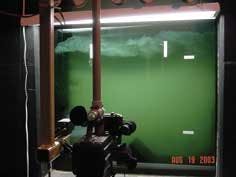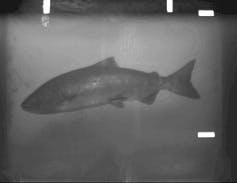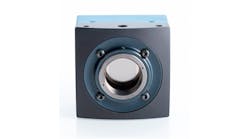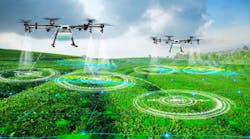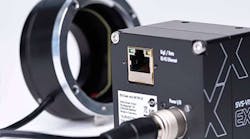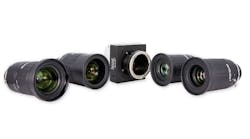A discussion withRobert Schoenbergerof Agris-Schoen Vision Systems
VSD:What applications or industries does ASVS serve?
Schoenberger: ASVS has historically served general manufacturing markets such as automotive, electronics, and food-for example, we’ve installed systems to make sure products containing peanuts go in the right container and that the containers are free of print defects. When our manufacturing-sector work decreased, we increased our work with governments, the military, the US Postal Service, and homeland security, but we kept going with manufacturing, which is now starting to show improvement.
We are hoping that by having a balance of work we can more easily weather the ups and downs of any one sector. I’m surprised at the amount of manufacturing that the government/military or their contractors do beyond the obvious things like making military equipment. Printing and tamper-resistant identity documents are good examples. In addition, OCR [optical character recognition], for example on mail, is very similar to OCR done for manufacturers. And, with mail there is a need to network significant numbers of computers and pass a substantial number of images across that network in an environment that is rugged and where the system cannot go down.
VSD:What market changes are driving the implementation of the technologies that you choose for these applications?
Schoenberger: New equipment that is faster and has better pattern-matching routines allows us to perform tasks that we couldn’t before. Less-expensive equipment and equipment that can handle multiple cameras now allows us to build systems that in the past would have been too expensive for some clients.
VSD:In which areas do you see the most growth? What are users demanding from you in the design of new systems?
Schoenberger:We are still seeing the highest rates of growth in government and military, especially homeland security. These sectors are looking for more and more advanced technologies. Pharmaceuticals and some other industrial manufacturing sectors are also picking up. For manufacturing, users still want what they usually have wanted-top-quality inspection systems with zero defects missed and with as low a price as possible.
VSD:What technologies and components does ASVS use in these applications?
Schoenberger: We use Dalsa (Waterloo, ON, Canada; www.dalsa.com), Opteon (Cambridge, MA, USA; www.opteontechcom), and Sony (Park Ridge, NJ, USA; www.sony.com/videocameras) cameras, and we use i2S (Pessac, France; www.i2S.fr) frame grabbers for linescan cameras. Also, we use Bitflow (Woburn, MA, USA; www.bitflow.com), Cognex (Natick, MA, USA; www.cognex.com), Coreco (St.-Laurent, QC, Canada; www.imaging.com), and Integral Technologies (Indianapolis, IN, USA; www.integraltech.com) frame grabbers for area-scan cameras. We are using more and more cameras that do not require frame grabbers.
VSD:How do you approach a new application? Do you work with OEMs or other systems integrators?
Schoenberger:For every new application we start by understanding the application as completely as possible. Winning the contract can be a money-losing proposition if we have missed something about the application, for example, a requirement or something about the environment. Testing sufficient samples and building a quick prototype of the software is a boon to winning the contract and not underbidding the project.
Testing and upfront development ensures that we really know what is required. The client often thinks it has fully specified the requirements, but a formal requirements analysis plus a UML [Unified Modeling Language] sequence chart almost always uncovers a new requirement. If we can’t get the lighting to be stable we don’t bid.
We often work with OEMs to utilize their equipment in a manner appropriate for our application or to get them to modify their equipment for our application. We also work with other companies that make the automation or material-handling equipment.
And we work with more than one OEM in each area. Sometimes the OEM’s equipment has unique capabilities, sometimes the equipment from other OEMs can do the same task. When an OEM brings us a lead we make every attempt to use its equipment on that project. However, if the lead comes from a linescan-camera manufacturer and after analyzing the application we determine that only an area-scan camera will reasonably fit the project, then we use the area-scan camera.
We try to limit the number of companies whose equipment we use because of the learning curve involved in really getting to know the equipment. The learning curve is, of course, the longest for software. Thus, we only use one smart camera-In-Sight from Cognex-and only a limited number of PC-based software products, primarily Halcon from MvTec (Munich, Germany; www.mvtec.com), Parallelix from i2S, VisionPro from Cognex, and XCaliper from FSI Automation (Bothell, WA, USA; www.fsiautomation.com).
VSD:What could vision-equipment manufacturers do to make your implementation jobs easier?
Schoenberger:To put it simply, provide lower-and-lower-cost equipment with increased capabilities.
VSD:What kinds of new applications do you expect to emerge?
Schoenberger:Military and homeland-security operations need image analysis for a variety of new applications. This image analysis can be real-time or postprocessed and is usually not similar to a factory production application. The sensors used to acquire imagery can be mounted on a building or a pole, as in a traditional security surveillance system, or mounted on a person or a vehicle. They can be mounted underwater, on land, in the air, or in space. The imagery sensors can “see” in many varied parts of the electromagnetic-frequency spectrum.
Real-time image processing can be used for identifying a specific person, as in biometrics, or identifying a person as opposed to something nonhuman in a security surveillance system or in a battlefield defense system. These systems don’t just determine that a person is there, but also figure out what they are doing or might do-in other words, threat assessment. Real-time image processing includes finding “targets” in a military application or controlling a vehicle such as a portable autonomous robot, car, tank, or plane, which might or might not have a human inside.
Different parts of the spectrum allow the sensor to see different things. Using separate imagery from more than one part of the spectrum allows the system to extract additional information from that imagery. Using imagery from sensor suites at different locations (or times) or a sensor suite that moves (for example, on a satellite or other vehicle) allows you to extract additional information and build “ultra-large” mosaics. The use of small image chips from points of interest allows the transmission during a short period of time or even real-time of what would otherwise be an untransmittable image set/stream.
Control of the cameras or of the vehicle based on the interpretation of the imagery adds another dimension of complexity not typical in a factory environment, where everything is organized, for example, the position of the parts. Yet, these same technologies can be put back into manufacturing and industrial applications where the position of the parts or even their identity is not known in advance. Obviously these technologies can be used to control robotics in a nonpreprogrammed manner.
“Unusual” government applications include identifying fish (see photos). The US Department of Agriculture is funding us to develop an automated system for just this purpose. Currently, people either stand at a window in a fish ladder or sit at a desk reviewing videotape from a camera at a window in a fish ladder. Their task is to count how many fish, of what species and of what size, are going up that fish ladder. This process determines the effectiveness of the ladder in mitigating the effects of dams on fish.
Salmon, trout, and shad are three species of interest. Fish populations have been decimated by the introduction of dams on rivers, and fish ladders allow migrating fish to get upstream of the dam to breed-but how effective are they? These fish counts are used in decisions such as whether or not to tear down a dam or whether or not hatchery programs are working.
VSD:How will system integrators have to change to serve emerging applications?
Schoenberger:The increase in capability of smart cameras and their growing acceptance is allowing automation firms with limited machine-vision experience to enter the market and have dropped the price that manufacturers are willing to pay for a simple system. The smart camera has forced us to trim down, so that we can do smart-camera systems at a low price, and to emphasize high-end, specialized systems where there is less competition and more profit.


